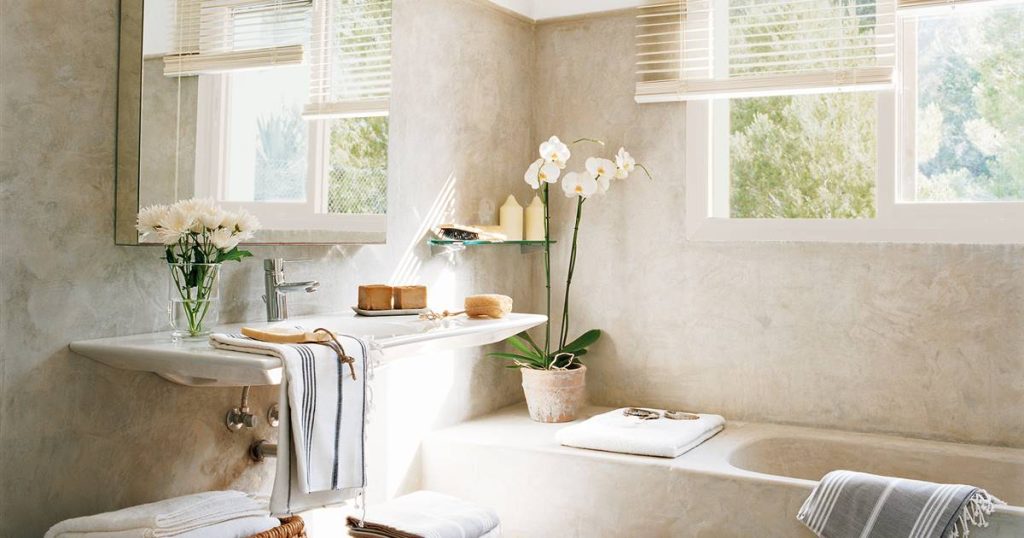
In recent years, bathrooms have undergone a remarkable transformation in their design philosophy. Once envisioned as spaces dominated by minimalist aesthetics, characterized by clean lines and a clinical feel, they have now evolved into havens of personality and decorative intent. This shift is evident in the explosion of color, the introduction of artwork, the incorporation of wooden elements, vintage inspirations, and, notably, the integration of plants, which have become pivotal in shaping the latest trends in bathroom design. From social media accounts to dedicated interior design platforms, the influence of plants in bathrooms is undeniable.
The Evolution of Bathroom Trends
The contemporary bathroom trends reflect a departure from the sterile, clinical environments of the past. Instead, they embrace a diverse range of design elements, with a particular emphasis on incorporating plants to breathe life into these spaces. This trend encompasses a spectrum of approaches, from simple additions like eucalyptus branches in showers, as popularized on TikTok, to more ambitious endeavors such as integrating lush greenery into shower spaces, as demonstrated in the viral video by Studio Wüst.
Harnessing Nature’s Beauty
Platforms like Instagram have become digital showcases for interior design inspiration, with accounts like Hippie Tribe leading the charge in showcasing how plants can transform bathroom spaces. However, questions arise regarding the suitability of bathroom environments for plant growth and which species thrive best in such conditions.
Understanding Plant Needs
Elena Páez, the founder of Planthae, a botanical boutique located in Madrid, traces the historical roots of the decorative obsession with plants back to the Victorian era. She notes that tropical species, originally introduced to Victorian homes to add greenery, continue to dominate indoor plant displays today.
Ideal Conditions for Bathroom Plants
In assessing the viability of plants in bathroom settings, several factors come into play. Páez emphasizes the importance of lighting, recommending sufficient natural light for tropical plants while avoiding direct sunlight, which can be detrimental. Additionally, she highlights the benefit of increased humidity in bathrooms, making them optimal environments for certain plant species.
Choosing the Right Plants
Certain species thrive in the humid conditions of bathrooms, including calatheas, ferns, philodendrons, crotons, and ficus. These plants not only tolerate but benefit from the moisture generated during showers. Their lush foliage adds visual interest and texture to bathroom spaces, contributing to a vibrant, natural ambiance.
Tailoring Plant Selection
While some plants flourish in humid environments, others, like succulents, prefer bright, dry conditions. Understanding each plant’s specific needs is crucial in creating a thriving indoor garden in the bathroom.
Creating a Verdant Oasis
With careful selection and maintenance, bathrooms can be transformed into lush sanctuaries, blurring the lines between indoor and outdoor spaces. By harnessing the beauty of plants, homeowners can elevate their bathroom aesthetics while fostering a sense of tranquility and connection with nature.
Conclusion
The integration of plants into bathroom design represents a paradigm shift in the way we perceive and interact with these spaces. From their historical roots in Victorian-era decor to their contemporary resurgence in modern interiors, plants have emerged as essential elements in creating inviting, visually captivating bathrooms. By understanding plant needs and selecting appropriate species, homeowners can cultivate thriving indoor gardens, transforming bathrooms into vibrant, rejuvenating sanctuaries. As the trend towards biophilic design continues to gain momentum, bathrooms are poised to become even more verdant and inviting spaces in the home.